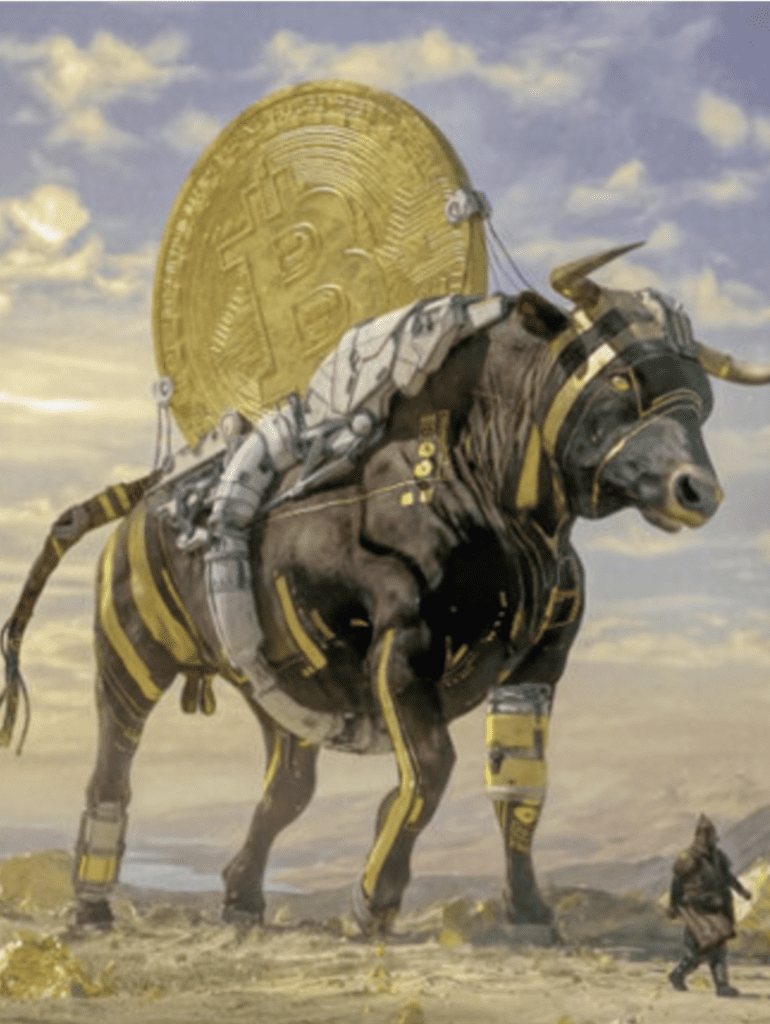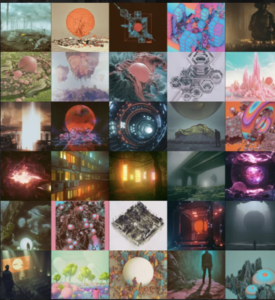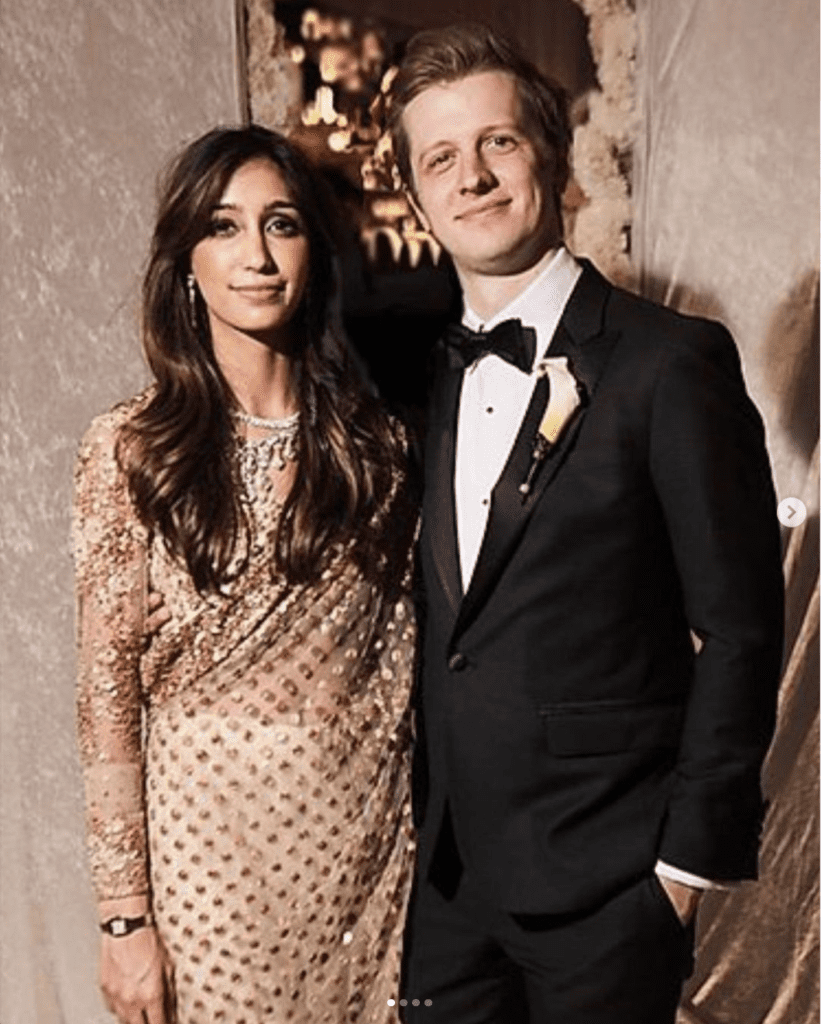With the Rise of NFTs, How Is the Art World Changing?
By • April 15, 2022 0 3936

While the modern art world is naturally one of upheaval, the meteoric rise of Non-Fungible Tokens or NFTs in the past pandemic year has left many wondering how new digital art and transaction technologies are shaping the artistic landscape. Will our aesthetic notions shift? What will become of the art marketplace? How will art galleries adapt?
The first NFT “Terra Nulius” was quietly minted on the Ethereum blockchain in 2014, but not much notice was taken of any NFT “art” until CryptoPunks, CryptoCats and CryptoKitties were launched in 2017, many circulated as “joke collectibles” that gained exponential market value with ensuing publicity.
NFT artwork had escaped most people’s awareness until last March when Christie’s sold Beeple’s “Everydays: The First 5000 Days,” a pastiche of the NFT artist’s 13 years of daily digital output – the aesthetics of which were derided by many critics – for a shocking $69.3 million. At Christie’s, contemporary specialist Noah Davis called the sale a “paradigm shift.” In 2020, the famed auction house had sold only a single NFT for $131,250… but in the first half of 2021 the “number was more than $100 million.”

Close up of small portion of Beeple’s NFT “Everydays: The First 5000 Days” which sold for $69.3 million at a Christie’s auction in March, 2021. Photo courtesy Beeple-crap.com.
“Within a few short months, the NFT went from a digital product utilizing a technology most people had barely heard of to the art world’s newest obsession, even though many traditional art collectors would be hard-pressed to explain how the process works or what to do with one,” wrote Ted Loos of Gallerie Magazine.
Soon a host of celebrities – Paris Hilton, John Cleese, Jay-Z, Alec Baldwin, Snoop Dogg, the Weeknd, and Jimmy Fallon – joined the NFT minting and buying mania, with major league sports, the fashion industry, former first ladies like Melania Trump (Did anyone other than she buy her white hat NFT yet?) and just about anyone else with some ether in their crypto wallet and access to the Ethereum blockchain where NFT exchanges are to be found. In April, 2021, even Saturday Night Live did a skit on NFTs they soon issued as an NFT.
In search of a better understanding of how the art world has been affected by NFT art, The Georgetowner spoke with a few experts. First, we talked to Dr. Lisa Strong, director of the art and museum studies MA program at Georgetown University and former manager of curatorial affairs at the Corcoran Gallery of Art to give us a basic understanding of NFTs and their effects. “NFTs are a form of digital barcode that can be attached to a file and stored on the blockchain [a decentralized, distributed record of digital transactions on the internet]. The token [a digital certificate of authorization akin to a deed or receipt] both authenticates ownership of the file and, by recording the transfer from one owner to the next, documents provenance,” she said.
With verifiable provenance and publicly-listed transactions, much of the uncertainty surrounding the history of ownership for an art work is eliminated. For art dealers and buyers, this is a transformative change. “Dealers would agree that the monetary value of an artwork rests in its authenticity. You can, in large measure, establish the authenticity of an artwork through documenting its provenance,” Strong said.
Since blockchain technology allows for the creation of “smart contracts,” artists can now structure new payment arrangements and ensure higher remuneration for their works. “I believe many artists using NFTs are able to set up a system of royalties, so they’re automatically paid each time the artwork changes hands,” Strong said. “On the one hand, recording ownership is crucial for artists because it allows them to sell digitally born artwork. Otherwise, their files could be copied and circulated infinitely, destroying their market value. Tokenizing digital art theoretically makes it possible to sell it and thus attractive to work in that medium.”
Since blockchain technology is so new, however, it is not without its risks for artists and collectors. “My understanding is that it is not yet possible to guarantee that a token and its file can remain connected and recorded on the blockchain indefinitely.”
As a university art professor, Strong is excited by some of the NFT artwork she has seen and rejects the automatic criticism many have levied against the aesthetics of much of the graphic design work issued as NFTs. “I am intrigued by [artist Damien] Hirst’s piece “The Currency,” she said. After a certain amount of time, participants have the choice between keeping either the physical artwork or its tokenized digital file. I will be interested to hear what the majority of them chooses.”
Many critics of NFT artwork, Strong argues, are confusing the medium with the message. “NFTs are just a technology. Criticizing the aesthetics of NFTs seems analogous to criticizing, say, a new media such as aquatint in the 17th century just because someone had not yet created a nice one. I have complete confidence in the creativity of contemporary artists to make interesting digital works once they have a reliable way to record them in a digital ledger. Just because you can tokenize any ordinary file doesn’t mean any file you tokenize is without value.”
University of Virginia professor of art history, Douglas Fordham, also talked to the Georgetowner about how the rise of NFT art might fit into the long-term trends of art history. “For more than a century now, artists have been working in what we call ‘new media’ which has ranged from film to video to digital art, and much of that work took the form of a critical interrogation of the medium itself, pushing beyond entertainment or absorption to analyze the way in which a medium functions in society or as an untapped vehicle of expression,” Fordham said. “NFT art seems to capitulate entirely to the medium, if blockchain can even be considered a medium. It feels like art as currency, and currency as art, pure and simple.”
Art History Professor Robert Bocci of Georgetown University, an artist and “image maker” himself, is “an expert in the field of photography, digital arts and fine arts in general.” He shared his skepticism about the future of NFT art with The Georgetowner. “The NFT phenomenon is very young,” he said, “and everybody is trying to figure it out. Blockchains and those who manage them are trying to turn everything into a stock market of sorts by inflating prices, etc…. Years back MIT created a virtual environment site called Second Life. That and many other digital environments… are completely gone now. I may be wrong and old-fashioned but I think NFTs are just another fad. Investing in an NFT is like investing in derivative investments that caused the collapse of the stock market in 2008.” Moreover, Bocci emphasizes the impermanence of online systems. “Digital systems are extremely frail and vulnerable. An NFT link that works today may be broken tomorrow.”
One major player in the NFT market — a former Christie’s art expert — Anne Bracegirdle, head of sales for the U.S. at Convelio and co-founder of the Art & Antiquities Blockchain Consortium, is openly bullish about the prospects of NFTs changing the art landscape for the better. “I became so excited about the blockchain itself after 8 years at Christie’s and realizing that all the guiding principles of the technology are directly linked to the biggest issues in the art world and they could revolutionize particular problems we see over and over again — simplified transactions, increased transparency, increased trust, increased security, and empowered users. All these elements that guide blockchain can simplify so many processes that make it so difficult to engage and be a buyer or a seller or even somebody who works in the art industry,” she said at a Hirshhorn online forum, “NFTs: Fad or the Future of Art,” on May 5, 2021.
The Georgetowner also spoke with influential gallerist, curator and writer Tod Von Ammon, the founder of “von ammon co” or VAC contemporary art gallery at 3330 Cady’s Alley NW in Georgetown. Von Ammon’s commercial gallery, founded only two and a-half years ago, represents a “multigenerational roster of international artists” who are “mostly mid-career” creators who have at least “one museum solo exhibition” or those who “participate in biennials worldwide,” though some “emerging artists” are also featured.
Though Von Ammon deals in and exhibits many digital artworks, he says he’s “not a big believer in NFTs.” While some benefits might accrue to digital creators who might gain some return by minting their own NFTs, he’s highly skeptical about idealistic claims he’s heard about the benefits of NFTs.

Owner of “von ammon co” gallery on Grace Street, Todd von Ammon (right) and his wife, Jasmine Kaleka (left). Photo courtesy VonAmmonCo on Instagram, June 11, 2020.
“At its best it’s a way to give people in the field of digital art a way to monetize their practice which has been very challenging over the years. I am not a big believer in NFTs. I think there are certain applications where it does make sense. Where an artist can almost create, I would call them diffusion lines of their artwork simply as a means to fund their studio practice and fund their personal life,” Von Ammon said.
Von Ammon makes clear that the culprit is not digital art itself; it’s NFTs. Some of the most exciting creative work is done on the digital side, so it makes no sense to dismiss the medium. “Since the collecting world is still highly conservative, it’s very skeptical of digital art which makes no sense. We’re entirely immersed in digital art right now.”
The rise of NFTs, however, fosters a disturbing set of trends. “I think its only real basis at this point is as a sort of speculative, hyper-capitalized token system that has nothing to do with aesthetics. It has nothing to do with connoisseurship. It has nothing to do with taste. And, it has nothing to do with intellect. So, I’m not a fan.”
At VAC, Von Ammon exhibits digital art “maybe a third of the time” and keenly appreciates its importance. The exploitative nature of NFTs, however, disturbs him. “Of course I’m not some kind of Luddite who’s anti-digital-art,” he said. “But I am anti-exploitation in art. And, I’m anti-consolidation of wealth by, you know, Silicon Valley people who don’t really have any concern for the survival of the art.”
Many cite the detrimental environmental impacts of minting NFTs on the blockchain and accepting cryptocurrency payments for them. To maintain a distributed ledger of every blockchain transaction on the internet requires extreme amounts of peer-to-peer computing energy expended by “mining” companies processing algorithmic computations for the decentralized ledger system. According to Ethereum’s own published plans to decrease energy consumption, the company’s current carbon footprint is approximately equal to Switzerland’s. (Ethereum.org)
“There’s an environmental drawback to every minting process,” Von Ammon argues, though he says that “on the scale that real artists use the technology, that’s probably not going to have a huge impact.”
What concerns Von Ammon more is how the NFT craze is shifting views on the value of creative artwork. “The way I see it is that for 99.9% of these NFT marketplaces, it’s simply a speculative commodity. You know, where so-called “NFT drops” tend to come in numbers of 10,000 or more of a relatively similar image whose only real value culturally or intellectually is its price tag and its potential for appreciation and free liquid exchange.” Between fine digital art and the world of NFTs, Von Ammon says he “wouldn’t even put these two things in the same category.”
When an artist decides to “mint their digital artwork as a small batch [of] fairly interesting digital artwork that just happens to be authenticated on the blockchain,” Von Ammon is sympathetic. But, when hype surrounds NFTs like the Bored Ape Yacht Club series and their celebrity owners hawking low-grade aesthetic imagery promoted as must-have investments, something’s not right.
To the argument that the anti-aesthetic sensibilities of much of today’s NFT art may be part of its revolutionary appeal, Von Ammon is not impressed. It’s no longer avant garde to simply repeat the provocative gestures of history’s first exhibited blank canvases or Duchamp’s ready-mades. “You just have to step back and ask what the hell are we doing? If nothing at all matters any more and everything is just destructive and is a joke, then where are we as a society? Has everything kind of sloughed off the bone except for speculative capitalism?”
The claims of idealists that NFT art puts more money into artists’ pockets while democratizing the art world don’t all hold up for Von Ammon. Hidden fees such as so-called “gas taxes” on the creators and the foregoing of personal relationships with gallery owners and collectors can be problematic. “From my perspective,” Von Ammon said, “most of the time the costs of minting and the costs of listing – there’s a tax on every single bit of transaction with regard to cryptocurrency and NFTs in particular. I’ve
actually seen most artists lose money in the process. I see it as kind of a pyramid scheme. And most people are not benefitting from it and they’re tricked into getting involved. They end up losing money or barely breaking even, which is a bad deal… A lot of people try to throw their libertarian spin on NFTs, but I’ve actually never seen a situation where there’s more taxation being levied on an individual.”
“From a more idealistic approach or standpoint,” he adds, the propaganda around NFTs is that it’s kind of democratizing and kind of cutting out the middleman and the artist makes all their money, but actually the costs of being involved and the risk that the artist needs to take is significantly worse than working through an art gallery. I would equate it more to an artist leaving the gallery system to join the record industry.”
Hidden risks for artists also lurk within the crypto and blockchain worlds. When artists mint NFTs of their artwork, they often don’t realize the risks associated with “these extremely volatile, risky crypto wallets that get hacked all the time,” Von Ammon warned.
“At the end of the day it’s all relational,” Von Ammon said. “It’s about trust. It’s about relationships. It’s about support. It’s about patronage. And these are just not words that live in the NFT space.”
On the theme of caring relationships, VAC’s current show “Les Eternels” by Ivonian-American artist Monsieur Zohore involves audience members collecting sculptural “dragon balls” to collect, take home and care for. Based on the 90s Japanese comic series “Dragon Balls,” the installation and program is “all about relationships and staying in touch,” Von Ammon said.

